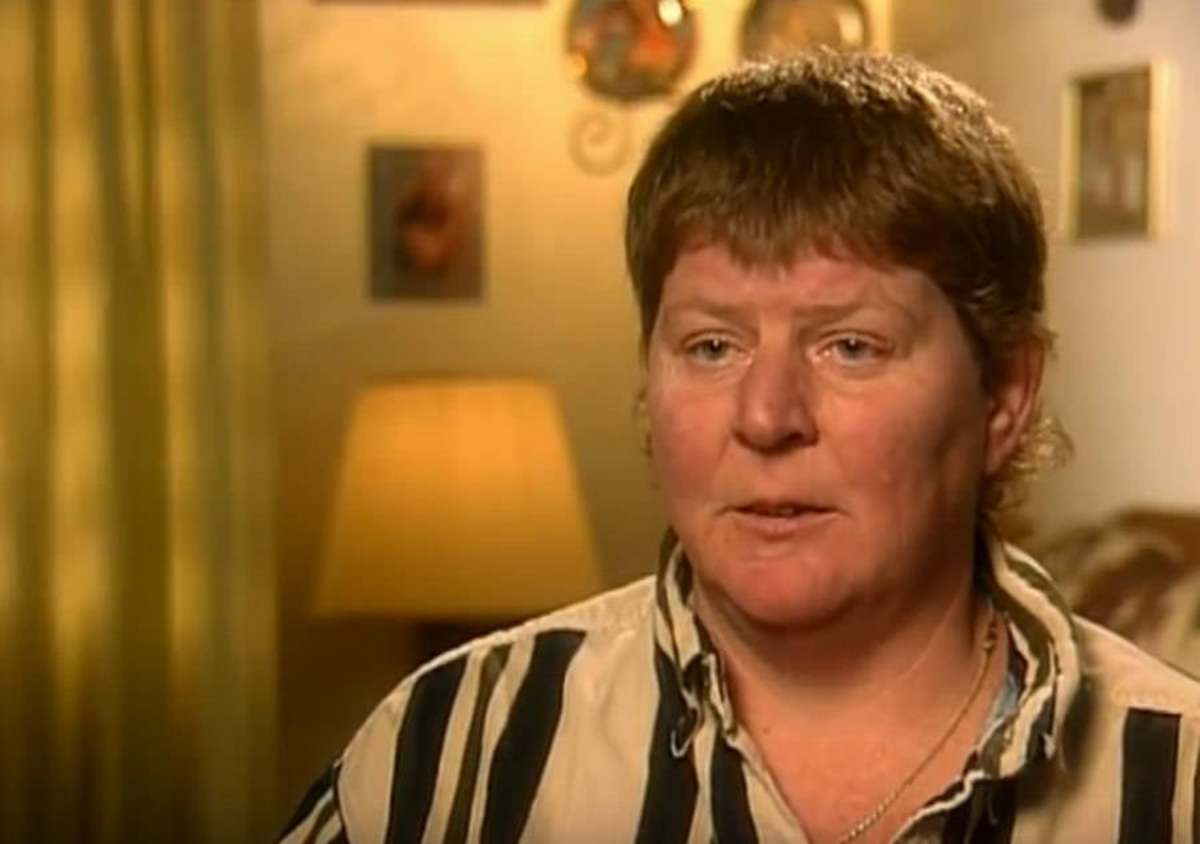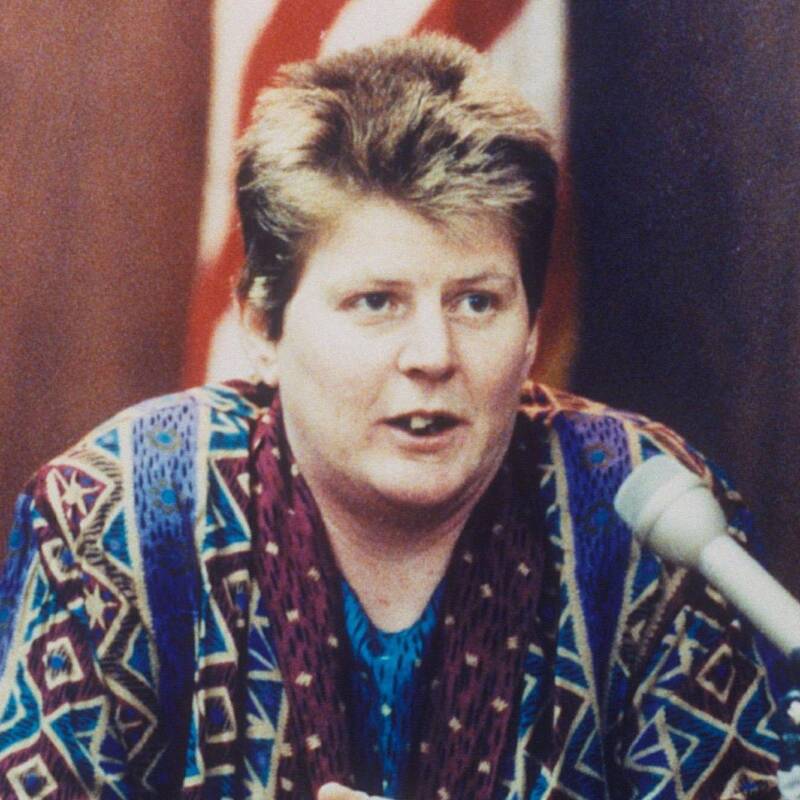Ever wondered what happened to the woman who stood beside one of America's most infamous female serial killers? Tyria Moore's life became inextricably linked to Aileen Wuornos, and her story, though less sensationalized, is a crucial part of understanding the Wuornos narrative.
The paths of Tyria Moore and Aileen Wuornos crossed in 1986 at a South Daytona lesbian bar called the Zodiac. Moore, born on August 3, 1962, in Florida, was 23 years old at the time, while Wuornos was 30. Their relationship quickly blossomed into a partnership that would last for approximately four and a half years. This period, however, would be overshadowed by the horrific crimes Wuornos would later commit. Moore's life took a dramatic turn as she became entangled with a woman who would eventually be convicted of murdering six men in Florida during the late 1980s and early 1990s. Wuornos's troubled history, marked by a difficult childhood and a series of unstable relationships, culminated in a series of violent acts that shocked the nation. Moore's role in these events remains a subject of speculation and debate, but her testimony would prove crucial in Wuornos's conviction.
| Category | Information |
|---|---|
| Full Name | Tyria Moore |
| Date of Birth | August 3, 1962 |
| Place of Birth | Florida, USA |
| Relationship with Aileen Wuornos | Partner (1986-1990) |
| Occupation | Unknown |
| Role in Wuornos Case | Witness, Cooperated with Police |
| Current Location | Allegedly Pennsylvania (Private Life) |
| Marital Status | Reportedly Married to a Woman |
| Additional Notes | Testified against Aileen Wuornos; No criminal charges were filed against her. |
| Reference | Murderpedia: Aileen Wuornos |
Moore's involvement in Wuornos's crimes has been a point of contention. While she was never formally charged as an accomplice, her knowledge of the murders has been widely reported. After Wuornos's arrest, Moore cooperated with law enforcement, providing a statement and phone recordings that significantly aided the prosecution's case. She testified against Wuornos in court, a decision that solidified her position as a key figure in the case and effectively ended their relationship. The audio recordings, in particular, captured a distraught Wuornos lamenting the breakup with Moore, revealing the emotional turmoil that preceded and accompanied the murders. Some accounts suggest that Moore manipulated Wuornos into confessing to the crimes, further complicating the narrative of their relationship.
- Remote Iot Monitoring Ssh Download Android Your Ultimate Guide
- Before Surgery The Untold Story Of Ms Sethis Journey Discover Now
The trial and subsequent conviction of Aileen Wuornos brought immense media scrutiny, and Moore found herself thrust into the public eye. The sensational nature of the case, coupled with the complexities of their relationship, made Moore a subject of intense interest. Despite the attention, she has managed to maintain a remarkably private life in the years following Wuornos's execution in 2002. Reports indicate that she relocated to Pennsylvania and has built a quiet existence, allegedly with her wife and family.
The portrayal of Tyria Moore in the media and in fictionalized accounts of the Wuornos story has varied. In the film "Monster" (2003), Christina Ricci played the character of Selby Wall, a fictionalized version of Moore. The film offered a sympathetic, albeit controversial, portrayal of their relationship, depicting Moore as a young, naive woman who was drawn into Wuornos's chaotic world. The film received critical acclaim, with Charlize Theron winning an Academy Award for her portrayal of Wuornos. However, the accuracy of the film's depiction of Moore and their relationship has been debated.
The question of Moore's true feelings for Wuornos remains unanswered. Some accounts suggest that Moore was the only person who genuinely loved and supported Wuornos, while others paint a picture of a manipulative relationship in which Moore exploited Wuornos's vulnerabilities. Regardless of the truth, their bond was undeniably intense and played a significant role in shaping the course of Wuornos's life. Joyner, in his account, suggests that Wuornos had "zeroed in on him" that night, marking him as her potential next victim, highlighting the predatory nature of Wuornos's interactions. It underscores the pervasive sense of danger and instability that characterized Wuornos's relationships and interactions.
- Remoteiot Behind Firewall Examples Best Practices Secure Access
- Unlock Remote Access Remoteiot Ssh For Raspberry Pi Free Download
Since her involvement in the Wuornos case, Tyria Moore has largely remained out of the public eye. She returned to her family in Ohio for a period of time, before eventually settling in Pennsylvania. Information about her current life is scarce, as she has deliberately avoided media attention. This desire for privacy is understandable, given the notoriety of the Wuornos case and the intense scrutiny she faced in its aftermath. Despite her efforts to maintain a low profile, Moore's name continues to be associated with one of the most infamous cases in American criminal history.
The case of Aileen Wuornos continues to fascinate and disturb. Her troubled life, marked by abuse, abandonment, and mental instability, provides a glimpse into the factors that may have contributed to her descent into violence. Wuornos's crimes sparked a national debate about the death penalty, mental illness, and the treatment of women in the criminal justice system. The case also raised questions about the role of poverty, trauma, and societal factors in shaping criminal behavior.
While Aileen Wuornos is often remembered as a monster, it is important to remember the victims of her crimes. Richard Mallory, David Spears, Charles Carskaddon, Peter Siems, Dick Humphreys, and Walter Gino Antonio were all innocent men whose lives were tragically cut short. Their stories are often overshadowed by the sensationalism surrounding Wuornos's case, but it is important to remember the human cost of her actions. The narrative surrounding Wuornos often delves into the intricacies of her life and the factors that may have contributed to her actions. However, amidst the focus on Wuornos, it's imperative to acknowledge the profound impact of her crimes on the victims and their families. Their lives were irrevocably altered, and their stories serve as a reminder of the real-world consequences of Wuornos's actions. The victims, often marginalized and overlooked, deserve to be remembered with dignity and respect.
Tyria Moore's life was forever changed by her relationship with Aileen Wuornos. Her cooperation with law enforcement played a crucial role in bringing Wuornos to justice, but it also came at a personal cost. While she has sought to distance herself from the case and live a private life, her name will forever be linked to one of the most notorious serial killers in American history. The story of Tyria Moore is a complex and cautionary tale about the power of relationships, the consequences of violence, and the enduring impact of crime.
The intersection of Moore's life with Wuornos's highlights the profound complexities of human relationships and the ripple effects of trauma and violence. Moore's story serves as a poignant reminder of the enduring impact that one person's actions can have on the lives of others. Her journey from a young woman in Florida to a key figure in a high-profile criminal case underscores the unpredictable nature of life and the enduring consequences of choices made. While Wuornos's troubled past and heinous acts have been extensively documented, Moore's story offers a contrasting perspective, shedding light on the experiences of those who are caught in the orbit of notorious criminals.
The details surrounding the meeting of Aileen Wuornos and Tyria Moore in a South Daytona lesbian bar called Zodiac in 1986 provide a glimpse into the circumstances that led to their fateful connection. At the time, Moore was 23 years old, while Wuornos was 30. Their relationship quickly evolved into a partnership that lasted for approximately four and a half years. However, their bond would ultimately be overshadowed by the horrific crimes committed by Wuornos. The meeting at the Zodiac bar marks the beginning of a chapter in both of their lives that would be defined by love, betrayal, and tragedy.
The recorded audio from the interaction between Wuornos and law enforcement reveals a distraught Wuornos, who is sobbing over her recent breakup with Moore. This audio evidence provides insight into the emotional state of Wuornos during the period leading up to the murders. It also underscores the significance of Moore's role in Wuornos's life and the impact of their separation on Wuornos's mental stability. The recorded audio serves as a poignant reminder of the human emotions and personal struggles underlying the sensationalized narrative of the Wuornos case.
The question of whether Moore took part in any of the murders has never been definitively established. However, it has been reported that Moore knew about some of the murders. This knowledge, regardless of her direct involvement, places Moore in a precarious position, as she became entangled in the web of deceit and violence surrounding Wuornos. The extent of Moore's knowledge and the degree to which she may have been complicit in Wuornos's crimes remain subjects of speculation and debate.
Anderson Cooper's reflection on a photograph taken when he was 17 serves as a tangential reference point, illustrating the passage of time and the evolution of personal narratives. While seemingly unrelated to the Wuornos-Moore case, Cooper's commentary underscores the human tendency to reflect on the past and to draw connections between personal experiences and broader cultural phenomena. The inclusion of Cooper's reflection serves as a reminder of the subjective nature of memory and the ways in which individuals construct their own narratives in relation to historical events.
The translation of details into German ("Tyria moore hat sich seit ihrer beteiligung am fall wuornos bedeckt gehalten," and "Tyria moore war die letzte bekannte lebensgefhrtin von aileen wuornos, einer der berchtigtsten serienmrderinnen der amerikanischen geschichte") emphasizes the international interest in the Wuornos case. The fact that information about Moore and Wuornos is available in multiple languages underscores the global fascination with true crime stories and the enduring impact of these cases on popular culture.
The references to Christina Ricci's portrayal of Tyria Moore in the film "Monster" and the details of Aileen Wuornos's appearance in a black and white photo from prison serve as visual reminders of the Wuornos story. These visual elements contribute to the enduring fascination with the case and the ways in which it has been depicted in popular culture. Ricci's portrayal of Moore offers a fictionalized interpretation of her character, while the prison photo of Wuornos provides a stark and haunting image of the notorious serial killer.
The mention of Aileen Wuornos meeting Tyria Moore in a Florida motorcycle bar in June 1986 further clarifies the timeline of their relationship. Additionally, the suggestion that Aileen was 30 years old when she met Tyria Moore corroborates the age difference between the two women. These details provide a more comprehensive understanding of the circumstances surrounding their initial encounter and the early stages of their relationship.



Detail Author:
- Name : Prof. Sigrid Wuckert IV
- Username : carmel.herzog
- Email : kihn.jarrell@langosh.com
- Birthdate : 1971-05-12
- Address : 822 Lang Extensions Apt. 938 New Sadye, ME 24504-3903
- Phone : 1-430-757-5317
- Company : Gottlieb Ltd
- Job : Logging Equipment Operator
- Bio : Eveniet et doloribus ut praesentium omnis animi quod quos. Tempora suscipit corrupti esse. Maiores et est est sapiente.
Socials
tiktok:
- url : https://tiktok.com/@electa_rice
- username : electa_rice
- bio : Consequatur beatae quis quod placeat laborum.
- followers : 2141
- following : 1659
instagram:
- url : https://instagram.com/electa.rice
- username : electa.rice
- bio : Voluptatem sit eos iure maiores. Est fugiat enim aliquid sapiente quo et. Et impedit ad earum.
- followers : 3492
- following : 2462